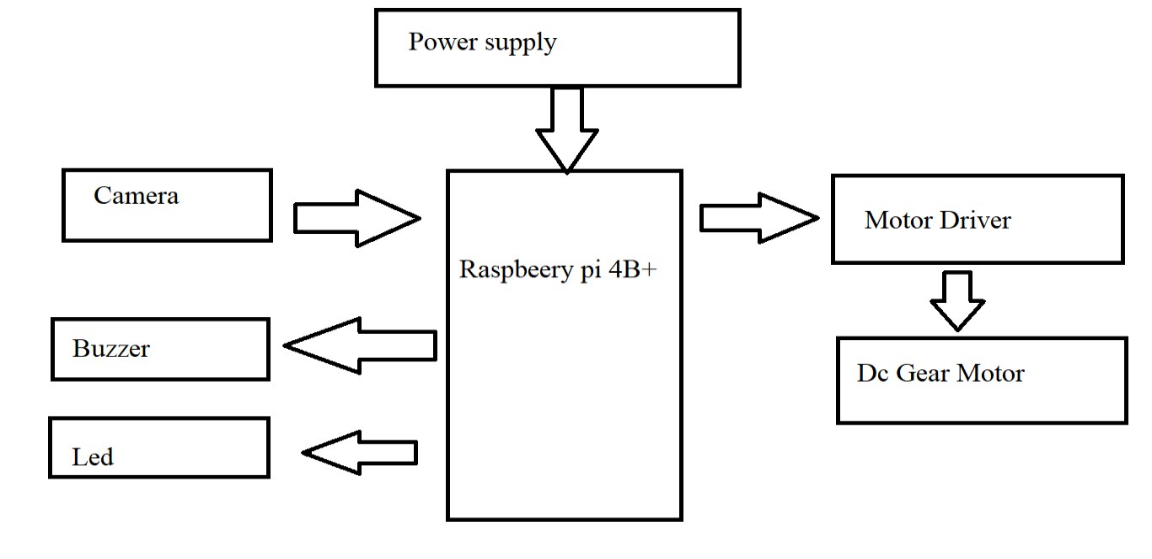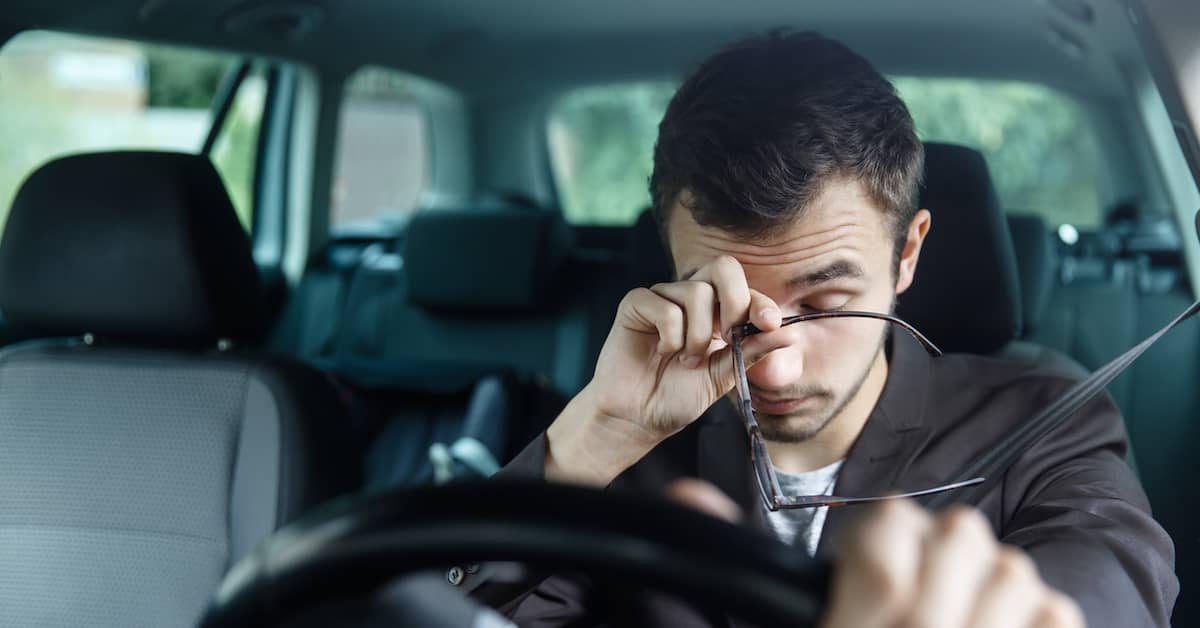Ijraset Journal For Research in Applied Science and Engineering Technology
- Home / Ijraset
- On This Page
- Abstract
- Introduction
- Conclusion
- References
- Copyright
Accident Prevention System for Cars, Buses, Trucks
Authors: Avantika Garje, Sunil Rajak, Sneha Temgire , Mr. Dhananjay Poul, Dr. B. E. Shinde
DOI Link: https://doi.org/10.22214/ijraset.2024.64472
Certificate: View Certificate
Abstract
Driver drowsiness is a significant factor in road accidents, contributing to a large number of crashes annually. To enhance road safety, the development of a Drivers Drowsiness Detection System is essential. This system builds to detect early signs of lazyness in drivers and provide timely alerts to prevent accidents. The proposed system uses to track key indicators of drowsiness, such as eye closure, head position, yawning, and blink rate. By utilizing a camera-based real-time monitoring system, it continuously analyzes the driver’s facial expressions. The system employs cadcade algorithms to distinguish a feature-based object detection algorithm to detect objects from images between alert and drowsy states based on collected data. When drowsiness is detected, the system triggers alerts like audio warnings, seat vibrations, or even vehicle slowing mechanisms, depending on the integration. This technology has the potential to significantly reduce the number of road accidents related to driver fatigue and could be applied in both personal vehicles and commercial fleets. The implementation of such systems represents a critical step toward improving road safety and decreasing driver-related incidents. Nowadays it is very challenging to stay active all the time due to busy schedules. Falling asleep while driving can lead to serious consequences, accidents, and even death. This situation is much more common and therefore it is very important to solve this problem. So, to solve this problem, we developed a sleep alarm system for drivers. This system alerts the user when he falls asleep at the wheel, thus the main concern is preventing accidents and saving lives. This system is useful for long- distance travelers and late-night drivers.
Introduction
I. INTRODUCTION
Driving is an essential aspect of modern life, providing unparalleled convenience and accessibility. However, the inherent risks associated with prolonged periods behind the wheel, especially during long journeys, make driver safety a critical concern. Fatigue and drowsiness significantly contribute to road accidents, endangering both the driver and other road users. Long hours of driving, monotonous roads, and lack of sleep contribute to the growing problem of driver drowsiness, especially in long-distance travel and commercial transportation sectors. Unlike distractions or impairment due to substances, drowsiness can develop gradually and may not be easily recognized by the driver until it's too late. To address this issue, the "Driver fatigue detection technology" has been developed as an innovative and proactive solution. This system leverages the capabilities of Raspberry Pi, a versatile microcontroller platform, to integrate various sensors that monitor the driver's physiological indicators and driving behavior. People in fatigue show some visual behaviors from changes in their facial expressions like face, head and eyes. By detecting early signs of fatigue, such as changes in face expressions, erratic driving patterns, and increased eye blink duration, the system aims to prevent accidents caused by drowsy driving. The aim of this system is not only to improve driver safety but also to contribute to the overall reduction in accident-related fatalities and injuries. With advancements in automation and AI, the integration of such systems into modern vehicles is becoming increasingly feasible, bringing us closer to a future where driver safety technologies are standard in every vehicle. This introduction outlines the motivation behind the development of a drowsiness detection system, its technological basis, and its potential impact on road safety.
II. LITERATURE SURVEY
Drowsy driving is one of the common causes of fatalities in car accidents. Truck drivers that travel for lengthy periods of time (especially at night), long-distance bus drivers, and overnight bus drivers are more vulnerable to this condition. Passengers in every country face the nightmare of Accidents. Fatigue-related traffic accidents result in a substantial number of major injuries, and deaths each year. As a result, due to its wide practical application, detecting and indicating driver drowsiness is a important topic of research. In general, there are three sorts of approaches for detecting drowsy drivers: vehicle-based, behavioural-based, and physiological based. A number of parameters such as steering wheel movement, accelerator or brake pattern,6 vehicle speed, lateral acceleration, deviations from lane position, and so on are continuously monitored in the vehicle-based method.
Driver drowsiness is defined as the detection of any abnormal change in these parameters. Non-intrusive driver tiredness detection uses cameras to analyze behaviors like blinking, yawning, sleepiness and head movement.[1].
As per study in 2004 the findings of study demonstrate that, like with automobile incidents, the risk of a TWMV driver causing a collision is substantially impacted by various individual factors. When speeding violations were taken into account as a driver-dependent risk factor, our findings revealed that driving at an improperspeed for the road or traffic conditions was the strongest predictor of the probability of causing an accident for both cars and motorcycles. There was also a significant link between excessive speed and the chance of causing a collision, but to a smaller amount. The disparity in estimates for the two primary categories of speed-related offences is understandable, as excess speed refers to exceeding the legal speed limit, which moped and motorbike drivers, to a lesser extent, rarely do [2].
Several factors, including the drivers' age, marital status, annual mileage, number of daily trips, and ordinary and aggressive infractions, were found to impact accident involvement in the study[3].
Image processing, EEG, vehicular, and voice metrics are among the approaches used in the system. Any of these approaches isn't guaranteed to yield 100 percent outcomes. EEG- based techniques yield the best results, but they're also the most obtrusive. Other procedures, however, have limits that prevent them from producing faultless outcomes[4].
III. BLOCK DIAGRAM
A. Components Required
- Raspberry Pi (3B+/4) with a power supply.
- Raspberry Pi Camera Module or USB camera.
- Python Libraries like OpenCV, Dlib, TensorFlow, or Keras (for image processing and deep learning).
- Buzzer or LED for alerting the driver.
- Power supply for the system in the vehicle.
 System Implementation
System Implementation
a) Setting Up Raspberry Pi
- Install the operating system on the Raspberry Pi (typically Raspbian).
- Update and install necessary packages
b) Connect the Camera Module
- Connect a Raspberry Pi camera to the CSI port or use a USB camera.
- Test the camera with the following command:
c) Facial Landmark Detection
- Use a pre-trained model from libraries like Dlib or OpenCV to detect facial landmarks, especially the eyes.
- The eye aspect ratio (EAR) can be calculated to detect whether the eyes are closed. If the EAR is below a certain threshold for a period of time, the driver is likely drowsy.
d) Drowsiness Detection Algorithm
- Capture frames from the camera.
- Detect the face and eyes using OpenCV or Dlib.
- Compute EAR to detect eye closure.
- If the eyes are closed for more than a predefined number of frames, trigger an alert (sound the buzzer or flash an LED).

e) Alert Mechanism
If drowsiness is detected, sound a buzzer or flash an LED to alert the driver.
f) Testing & Deployment
- Test the system under different lighting conditions and with various drivers.
- Deploy the system inside the vehicle, ensuring the camera is properly positioned to capture the driver's face.
IV. SCOPE OF THE PROJECT
The scope of the driver anti-sleep alarm system is creating challenges every day. Around 20% of road accidents happen due to sleep deprivation. The drivers who are tired fall asleep and are unable to apply brakes or control the car. This application helps to avoid accidents and to ensure the safety of the drivers and passengers being upgraded. The core purpose of the project is to detect the sleep deprivation of the driver in real time, alert the drivers to avoid accidents and to ensure road safety. It is a real-time monitoring project, with continuous reviews and feedback, data storage and analytics, adjustable alerts and sensitivity. Collection of data, analysis of data, alert generation, and sleep detection system integration are all functional scores of the project. The extensibility of projects with cloud based analysis, multi-modeling sensing systems, artificial intelligence enhancement, and autonomous vehicles with integration. It has many applications in transportation, medical and health systems (hospitals, etc.), vehicles and industry, etc. The project helps to avoid and reduce accidents, helps to maintain road safety, improves driver's awareness, reduces insurance and maintenance costs. This will create awareness among travelers related to traveling safety safety, which is a must while traveling .The system will detect the symptoms of sleep and then warn the driver as well as the family of the driver at the same time .This system can be used in semi-automated vehicles
Conclusion
The development and implementation of a Driver Drowsiness Detection System have the potential to significantly enhance road safety by addressing one of the leading causes of traffic accidents—driver fatigue. By leveraging advanced technologies such as computer vision, the Cascade Algorithm, and physiological monitoring, these systems can detect early signs of drowsiness in real-time and issue timely alerts to prevent accidents. The system\'s ability to analyze facial features, eye movement, and other indicators of fatigue allows for proactive intervention, reducing the risk of crashes caused by drivers falling asleep or losing focus. As technology advances, integrating more accurate sensors, such as heart rate monitors or EEG data, could further improve detection accuracy and reliability. The concept of fatigue or drowsiness detection device detects and offers information about behavioral, vehicular and physiological parameters based totally on it. It is observable that in the moments in advance rather than falling asleep, drivers yawn less, now no longer more, frequently. While challenges such as cost, privacy concerns, and integration with existing vehicle systems remain, the benefits of these detection systems in saving lives and reducing accident-related costs far outweigh the obstacles. In future experiments, we will use more technology and body principle characteristics to intersect compared to rightly, obtains a more accurate judgment. In conclusion, driver drowsiness detection systems represent a promising step forward in ensuring safer roads and reducing fatigue-related accidents, with potential widespread adoption in personal and commercial vehicles.
References
[1] Lal, S.K.L., & Craig, A. (2001) A Critical Review of the Psychophysiology of Driver Fatigue. Biological Psychology, 55(3), 173-194. This paper explores the psychophysiological factors behind driver fatigue and reviews various physiological methods used to monitor fatigue in drivers, such as EEG. [2] Vural, E., Cetin, M., Ercil, A., Littlewort, G., Bartlett, M., & Movellan, J. (2009) Drowsy Driver Detection Through Facial Movement Analysis. Proceedings of the International Conference on Human-Computer Interaction, 6(2), 6-18. The study focuses on detecting driver drowsiness by analyzing facial movements, including blink rates and yawning. [3] Ji, Q., & Yang, X. (2002). Real-time Visual Cues Extraction for Monitoring Driver Vigilance. Proceedings of the IEEE Intelligent Vehicles Symposium, 2002, 275-280. The authors present a system for real-time visual cue extraction, focusing on features such as yawning and eye closure for monitoring driver drowsiness. [4] Papakostopoulos, V., Tzovaras, D., & Nikolaidis, N. (2017). Online Drowsiness Detection Through Machine Learning Algorithms. IEEE Transactions on Intelligent Transportation Systems, 18(12), 3452-3461. This study investigates the application of Support Vector Machines (SVM) for classifying driver drowsiness based on behavioral features like blink duration and head pose. [5] Fan, X., Yin, B., Sun, Y., & Yin, B. (2018). Driver Drowsiness Detection Based on Multimodal Information Fusion Using LSTM Neural Networks. IEEE Access, 6, 61925-61935. This paper discusses the use of Long Short-Term Memory (LSTM) networks for detecting driver drowsiness by fusing information from facial and behavioral data. [6] Zhang, Z., Zhang, L., Zhao, H., & Shi, X. (2013). Real-time Lane Departure Detection System Based on a Single Camera. Proceedings of the International Conference on Intelligent Transportation Systems, 57(3), 134-140. This paper presents a lane-departure warning system as an indicator of drowsiness by detecting if a vehicle drifts out of its lane. [7] Awais, M., Badruddin, N., & Drieberg, M. (2017). Proceedings of the IEEE Region 10 Conference (TENCON), 2017, 2245-2249. The paper presents an EEG-based sleepiness detection system that uses power spectrum analysis to identify when a driver is becoming fatigued. [8] Silva, H., Duarte, C., & Carreira, R. (2019) A Cloud-Based Driver Drowsiness Monitoring and Alarm System. International Journal of Cloud Computing and Services Science, 8(4), 759-765. This paper discusses a cloud-based driver drowsiness detection system that can transmit data in real time to cloud platforms for analysis and monitoring. [9] Yuen, J., Ong, C., Lee, K.H., & Yeo, S.C. (2020). Real-time Driver Drowsiness Detection System Based on Deep Learning. Proceedings of the International Conference on Artificial Intelligence and Machine Learning in Intelligent Systems, 45, 139-145. This study demonstrates the use of convolutional neural networks (CNN) for real-time detection of drowsiness using video data from in-vehicle cameras.
Copyright
Copyright © 2024 Avantika Garje, Sunil Rajak, Sneha Temgire , Mr. Dhananjay Poul. This is an open access article distributed under the Creative Commons Attribution License, which permits unrestricted use, distribution, and reproduction in any medium, provided the original work is properly cited.

Download Paper
Paper Id : IJRASET64472
Publish Date : 2024-10-05
ISSN : 2321-9653
Publisher Name : IJRASET
DOI Link : Click Here
 Submit Paper Online
Submit Paper Online

